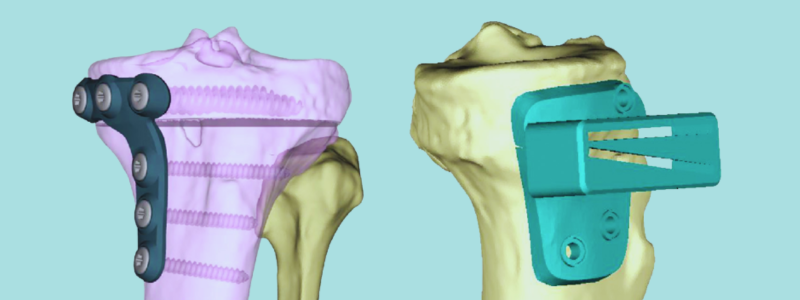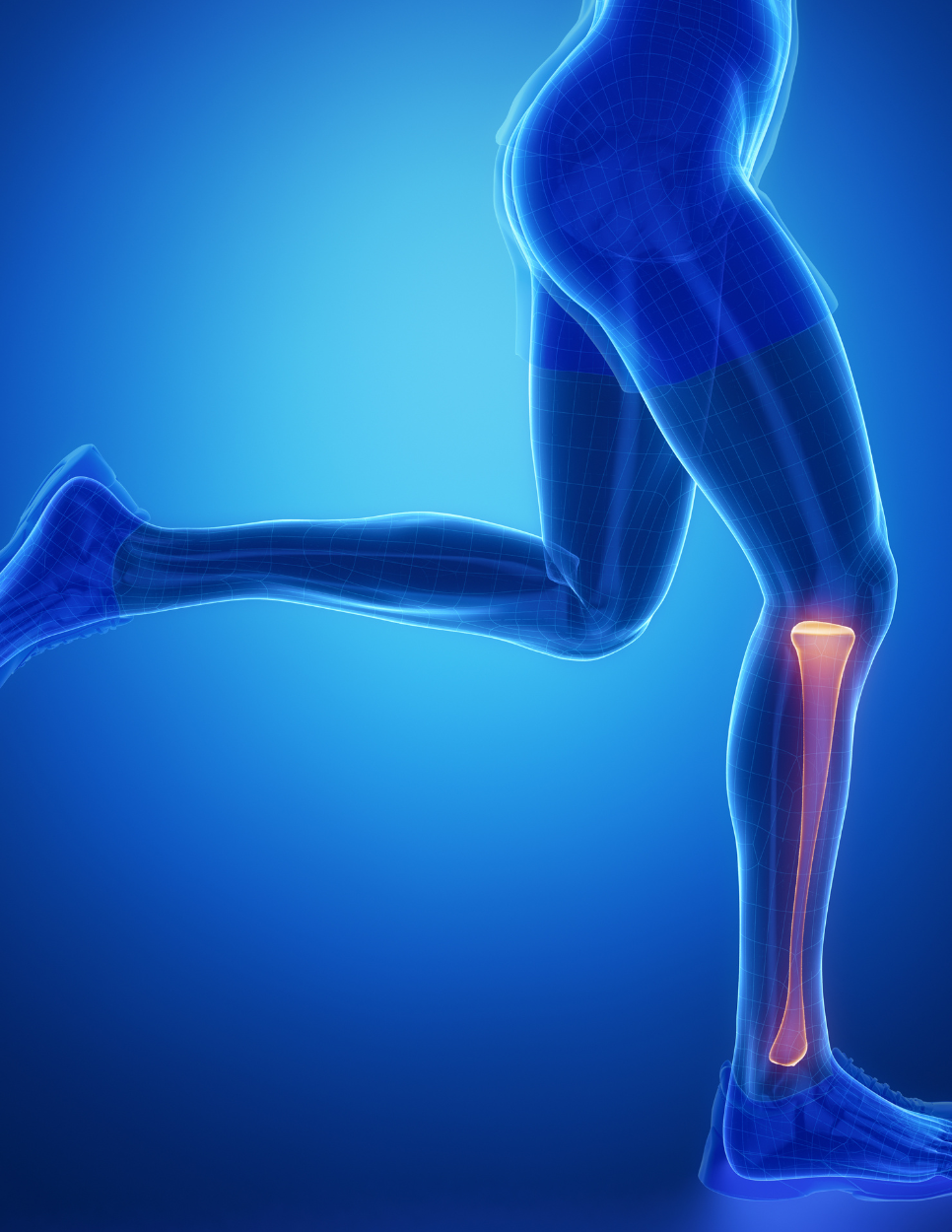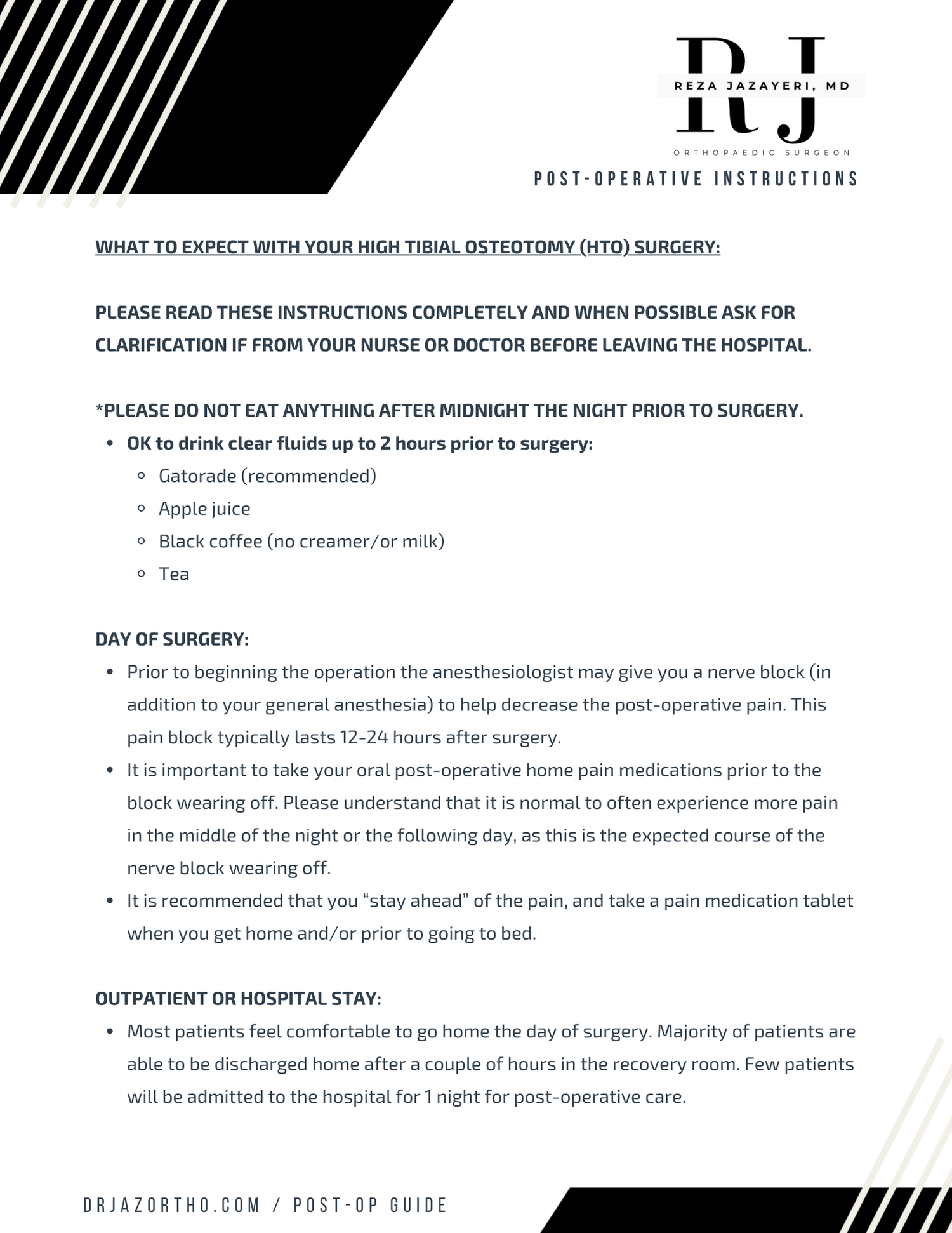
High Tibial Osteotomy (HTO)
Benefits and purpose of HTO
-
What is High Tibial Osteotomy (HTO)?
High Tibial Osteotomy (HTO) is a specialized knee surgery designed to realign the leg and shift weight off the damaged portion of the knee joint. It is most often performed in patients with arthritis limited to one side of the knee (typically the inner, or medial, side) who are still active and want to delay or avoid a total knee replacement. By changing how the knee bears weight, HTO can reduce pain, improve mobility, and extend the life of your natural joint.
-
Is HTO Right for You?
HTO is most appropriate for patients who:
- Have pain and arthritis primarily on one side of the knee
- Have a “bow-legged” (varus) alignment
- Are typically younger than knee replacement candidates (40s–50s)
- Remain active and want to continue sports, exercise, or physical work
- Have good motion in the knee without advanced arthritis in all compartments
If the arthritis is widespread, or if significant stiffness and deformity are present, other surgical options may be more suitable.
- Have pain and arthritis primarily on one side of the knee
How the Surgery Works
There are two main types of HTO procedures:
-
1. Medial Open-Wedge Osteotomy
- A small wedge-shaped gap is created on the inner side of the shinbone (tibia).
- The bone is gently opened, realigning the leg.
- The space is held in place with a plate and screws, sometimes using bone graft to assist healing.
- A small wedge-shaped gap is created on the inner side of the shinbone (tibia).
-
2. Lateral Closing-Wedge Osteotomy
- A wedge of bone is removed from the outer side of the shinbone.
- The two sides are then brought together and secured with plates/screws.
Both techniques aim to shift the weight-bearing line to the healthier side of the knee, reducing stress and pain where cartilage is damaged.

Benefits of HTO
- Relieves pain from arthritis on one side of the knee
- Allows patients to stay active and maintain their natural joint
- Slows the progression of arthritis
- Delays or avoids total knee replacement (often for 10+ years)

Risks and Considerations
As with any surgery, HTO carries some risks. These include delayed bone healing, infection, blood clots, changes in leg length, or nerve and vessel injury. The procedure is not recommended for patients with severe, widespread arthritis, obesity, or limited knee motion.

Recovery and Rehabilitation
- Patients typically use crutches and limit weight bearing for the first 6 weeks.
- Physical therapy begins soon after surgery to restore motion and build strength.
- Most patients resume daily activities by 3–4 months, with full recovery taking up to 6 months.
- Long-term outcomes are best when combined with rehabilitation and healthy lifestyle habits.

Post-Operative Instructions
Your recovery starts here. Follow the tailored guidelines below to protect your repair and optimize healing.
Watch HTO with Arthrex® iBalance®
*IF YOU HAVE ANY ADVERSE EFFECTS WITH THE MEDICATIONS or QUESTIONS, PLEASE CALL OUR OFFICE during clinic hours at 855-892-0919 or the After-hours nurse advice at 1-888-576-6225.
